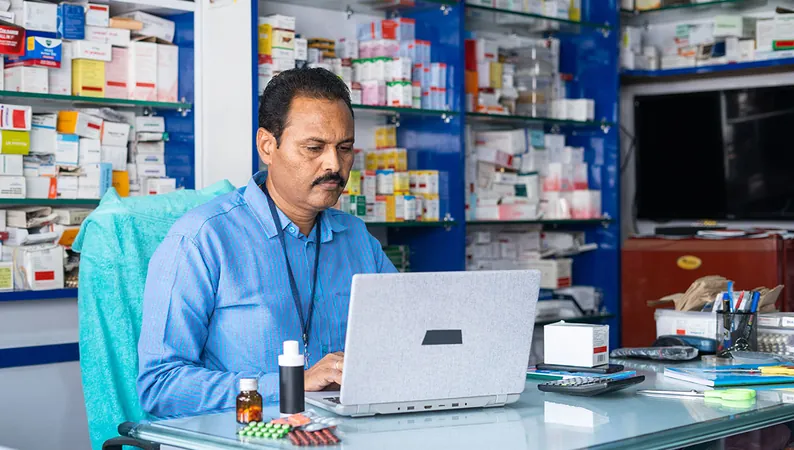
Unlocking the Power of Polypills: A Possible Lifesaver for Millions by 2050
2025-07-16
Author: Nur
The Polypill Revolution: A Global Health Game-Changer?
Imagine a single pill that could significantly slash cardiovascular disease (CVD) deaths by millions. A groundbreaking modeling study suggests that a wider adoption of single-pill combination (SPC) therapies, known as polypills, could be a crucial step in combating this global health crisis.
A Potential Lifeline: 51 Million Lives Saved?
Research led by Dr. David Watkins from the University of Washington predicts that if polypills are effectively integrated into health systems worldwide, they could prevent between 29 to 51 million deaths and avert up to 130 million instances of heart attacks, strokes, and heart failure by 2050. The impact would be particularly pronounced in countries with large populations and currently subpar adoption of CVD therapies.
A Timely Discussion Amidst Global Health Initiatives
The study arrives just before a pivotal United Nations meeting focusing on noncommunicable diseases this September, where new global CVD prevention targets are expected. Dr. Anubha Agarwal from WashU Medicine underscored the study's relevance, highlighting how the unrealized potential of polypills could become a significant tool against the escalating CVD epidemic.
Polypills: A Simple Solution to a Complex Problem?
Despite the availability of effective medications for CVD prevention, their usage remains alarmingly low across various regions. Polypills aim to streamline treatment and increase patient adherence, yet barriers have hindered their widespread adoption. Dr. Watkins indicates that institutional resistance and market challenges have stalled the introduction of these transformative therapies.
Proven Benefits: Evidence from Clinical Trials
Earlier studies have demonstrated that fixed-dose therapies can drastically reduce the risk of major cardiovascular events. For instance, the SECURE trial showcased how a polypill incorporating common cardiovascular medications significantly lowered major cardiovascular incidents in patients post-heart attack.
What If We Roll Out Polypills Worldwide?
Watkins and his team simulated the potential effects of implementing SPC therapies across 182 countries from 2023 to 2050. Two scenarios were evaluated: targeting already aware patients and broadly expanding access to those over 55 at risk of CVD. Their findings indicated that enhanced polypill use could yield benefits comparable to achieving very high antihypertensive coverage or dramatically reducing tobacco use.
Addressing Safety Concerns: The Advantages Outweigh Risks
While the modeling predicts an uptick in minor side effects, such as dizziness or nonfatal gastrointestinal bleeding, experts like Agarwal suggest that managing these risks far outweighs the potential negative outcomes, particularly when weighed against lives that could be saved.
A Call to Action: Bridging the Gap in CVD Prevention
The study highlights a pressing need for action as global health initiatives evolve. However, to fully harness the potential of polypills, major obstacles like low manufacturer interest and clinician resistance must be tackled. Dr. Watkins asserts that embracing these simpler treatments could be transformative for millions who currently lack adequate access to care.
The Future of CVD Treatment: Hope on the Horizon?
In summary, the findings from this compelling study illuminate a path forward in the fight against cardiovascular disease. With focused attention on integrating polypills into global health strategies, we might just be on the cusp of saving millions of lives by 2050. The message is clear: innovative, accessible solutions like polypills could dramatically improve worldwide CVD prevention efforts.




 Brasil (PT)
Brasil (PT)
 Canada (EN)
Canada (EN)
 Chile (ES)
Chile (ES)
 Česko (CS)
Česko (CS)
 대한민국 (KO)
대한민국 (KO)
 España (ES)
España (ES)
 France (FR)
France (FR)
 Hong Kong (EN)
Hong Kong (EN)
 Italia (IT)
Italia (IT)
 日本 (JA)
日本 (JA)
 Magyarország (HU)
Magyarország (HU)
 Norge (NO)
Norge (NO)
 Polska (PL)
Polska (PL)
 Schweiz (DE)
Schweiz (DE)
 Singapore (EN)
Singapore (EN)
 Sverige (SV)
Sverige (SV)
 Suomi (FI)
Suomi (FI)
 Türkiye (TR)
Türkiye (TR)
 الإمارات العربية المتحدة (AR)
الإمارات العربية المتحدة (AR)